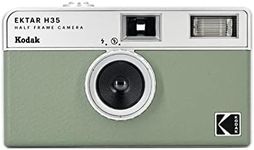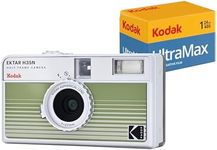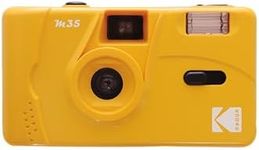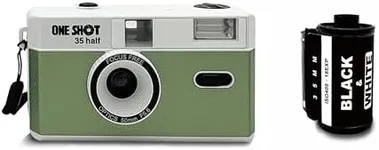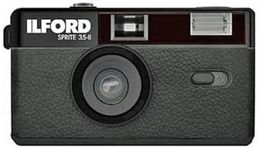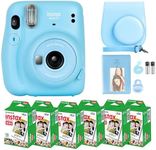Buying Guide for the Best Point And Shoot Film Camera
Choosing a point-and-shoot film camera can be a delightful experience, especially if you appreciate the nostalgic charm of film photography. These cameras are known for their simplicity and ease of use, making them perfect for beginners and casual photographers. When selecting the right point-and-shoot film camera, it's important to consider several key specifications to ensure you get the best fit for your needs. Here are the main specs to look out for and how to navigate them.Lens QualityThe lens quality is crucial because it directly affects the sharpness and clarity of your photos. Point-and-shoot cameras typically come with a fixed lens, so you want to ensure it is of good quality. Look for lenses made by reputable manufacturers or those with a good reputation for sharpness. If you plan to take a lot of landscape or architectural photos, a wide-angle lens might be beneficial. For portraits, a lens with a moderate focal length is ideal.
Aperture RangeThe aperture range determines how much light the lens can let in, which affects exposure and depth of field. A wider aperture (lower f-number) allows more light and is better for low-light conditions and achieving a blurred background effect. If you often shoot in varying lighting conditions, a camera with a wider aperture range will be more versatile. For general use, an aperture range of f/2.8 to f/16 is usually sufficient.
Shutter SpeedShutter speed controls how long the camera's shutter stays open to expose the film. Faster shutter speeds (e.g., 1/500s) are great for freezing action, while slower speeds (e.g., 1/30s) can create motion blur or be used in low-light situations. If you plan to capture fast-moving subjects, look for a camera with a range of fast shutter speeds. For general photography, a range from 1/30s to 1/500s should cover most situations.
Film FormatPoint-and-shoot film cameras typically use 35mm film, which is widely available and offers a good balance of image quality and convenience. Some cameras may use other formats like APS or medium format, but these are less common and can be more expensive. If you are new to film photography, starting with a 35mm camera is recommended due to the availability of film and processing services.
Viewfinder TypeThe viewfinder is what you look through to compose your shot. Optical viewfinders are common in point-and-shoot cameras and provide a clear, real-time view of your subject. Some cameras may have electronic viewfinders, which can offer additional information like exposure settings. If you wear glasses, look for a viewfinder with diopter adjustment for better clarity. For most users, an optical viewfinder will be sufficient and easy to use.
FlashA built-in flash can be very useful for low-light situations or for adding fill light to your photos. Some point-and-shoot cameras have automatic flash settings, while others allow you to manually control the flash. If you often shoot indoors or in low light, a camera with a reliable built-in flash is essential. For outdoor or well-lit environments, the flash may be less critical, but still a handy feature to have.
Size and PortabilityOne of the main advantages of point-and-shoot cameras is their compact size and portability. Consider how and where you plan to use the camera. If you want something you can easily carry in your pocket or bag, look for a smaller, lightweight model. If you don't mind a bit more bulk for potentially better features, a slightly larger camera might be acceptable. Think about your typical shooting scenarios and choose a size that fits your lifestyle.
